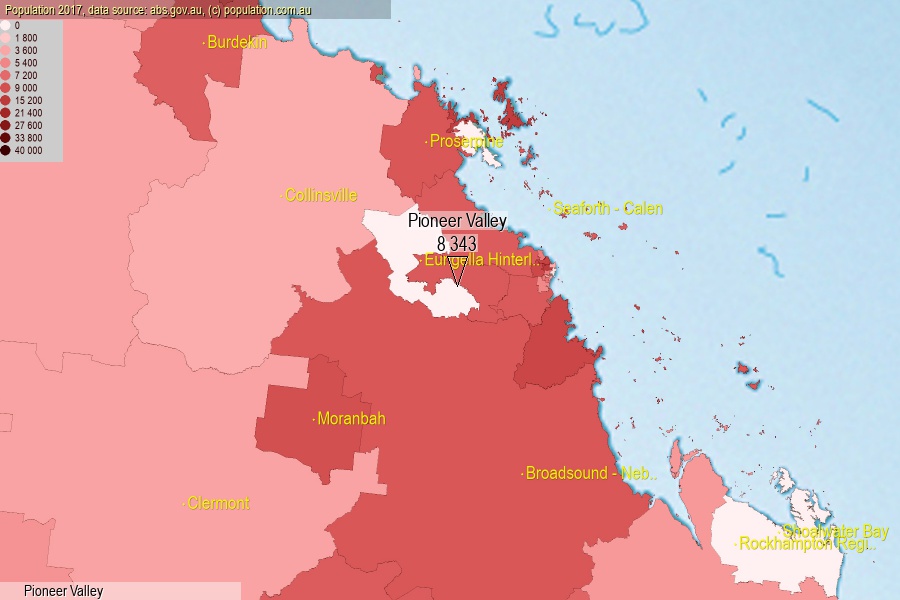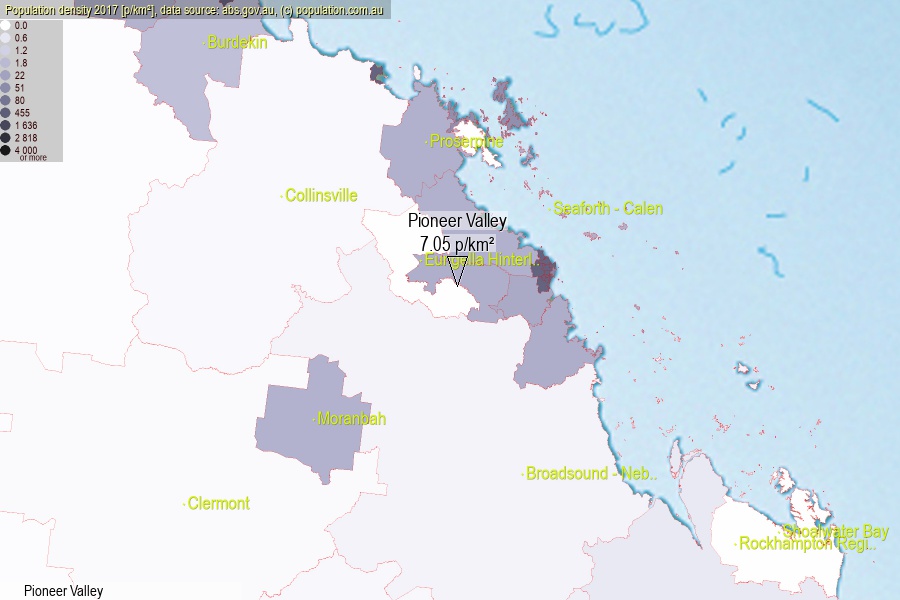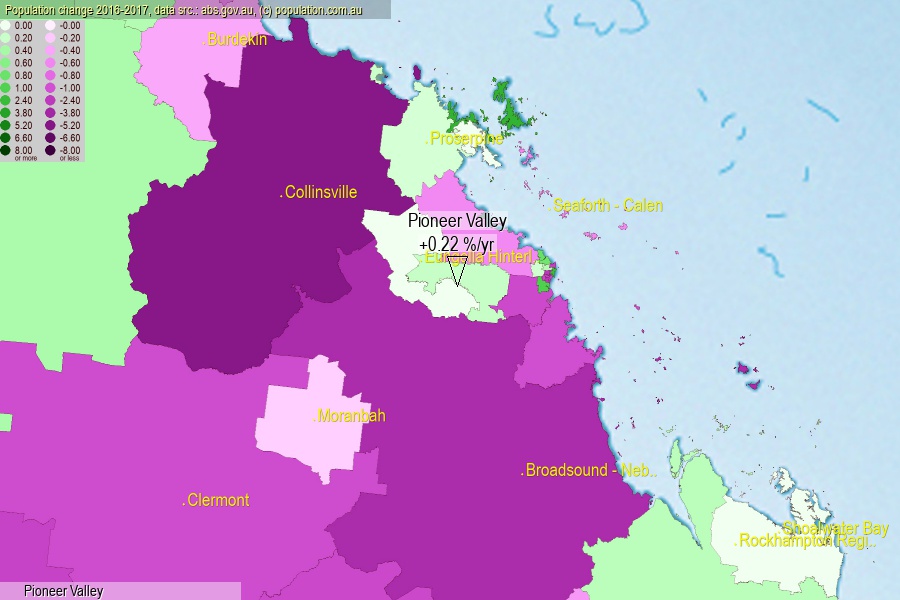 population.com.au
population.com.auLast official estimated population of Pioneer Valley (as Statistical Area Level 2) was 8 343 people (on 2017-06-30)[2]. This was 0.03% of total Australian population and 0.167% of QLD population. Area of Pioneer Valley is 1 184.20 km², in this year population density was 7.05 p/km² . If population growth rate would be same as in period 2016-2017 (+0.22%/yr), Pioneer Valley population in 2025 would be 8 488. [0]



Click to enlarge. Pioneer Valley is located in the center of the images.
Population [people], population density [p./km²] and population change [%/year] [2]
View borders » (new window) [4]
[1991-1992] +1.09 %/Yr.
[1992-1993] +0.78 %/Yr.
[1993-1994] +0.51 %/Yr.
[1994-1995] +0.26 %/Yr.
[1995-1996] +1.51 %/Yr.
[1996-1997] +0.25 %/Yr.
[1997-1998] +0.58 %/Yr.
[1998-1999] +0.85 %/Yr.
[1999-2000] +1.69 %/Yr.
[2000-2001] +1.07 %/Yr.
[2001-2002] +0.74 %/Yr.
[2002-2003] -0.16 %/Yr.
[2003-2004] +0.56 %/Yr.
[2004-2005] +1.66 %/Yr.
[2005-2006] +4.03 %/Yr.
[2006-2007] +5.52 %/Yr.
[2007-2008] +6.88 %/Yr.
[2008-2009] +8.33 %/Yr.
[2009-2010] +5.82 %/Yr.
[2010-2011] +4.69 %/Yr.
[2011-2012] +4.74 %/Yr.
[2012-2013] +5.62 %/Yr.
[2013-2014] +2.04 %/Yr.
[2014-2015] +1.84 %/Yr.
[2015-2016] +0.11 %/Yr.
[2016-2017] +0.22 %/Yr.
[0] Calculated with linear interpolation from officially estimated population
[1] Read more about SA2 and Australian Statistical Geography Standard (ASGS) on abs.gov.au
[2] Population data from Australian Bureau of Statistics (Population and density: 2017; change: 2016-2017)
[3] Digital Boundaries: Australian Statistical Geography Standard (ASGS) 2016.
[4] Border coordinates are simplifyed using Ramer-Douglas-Peucker algorithm.